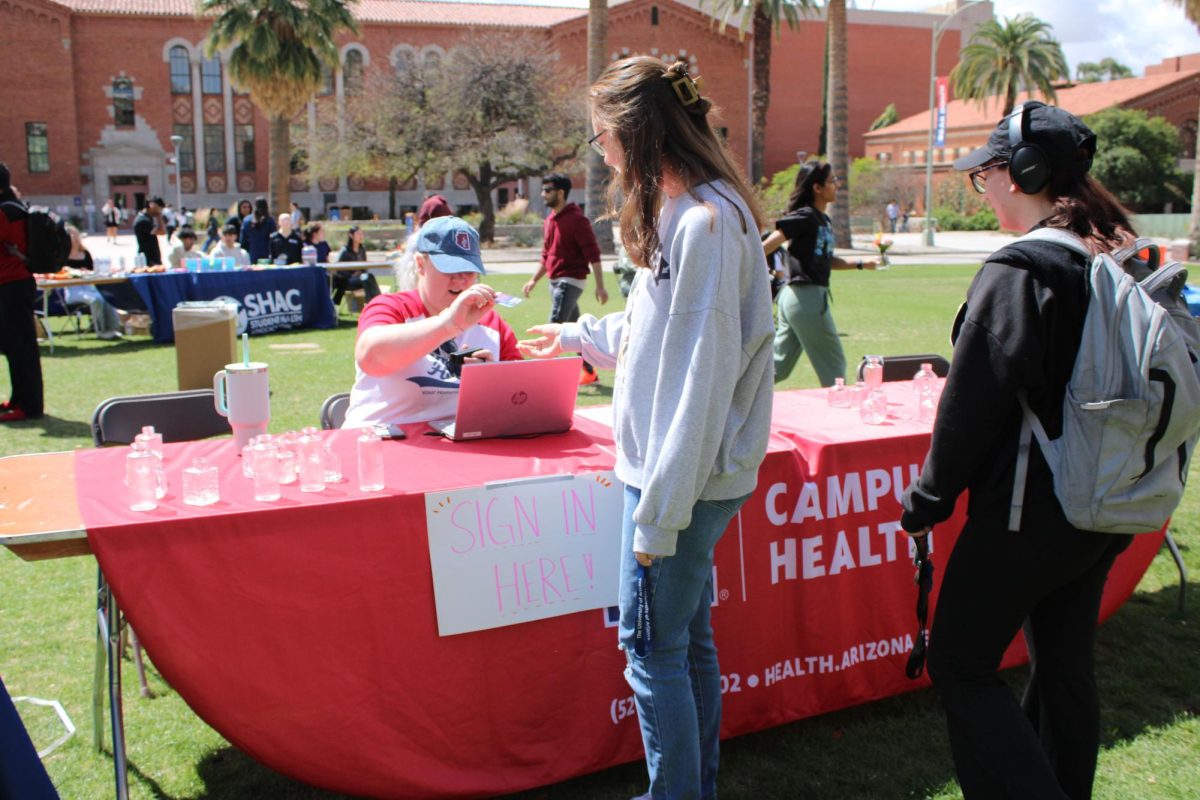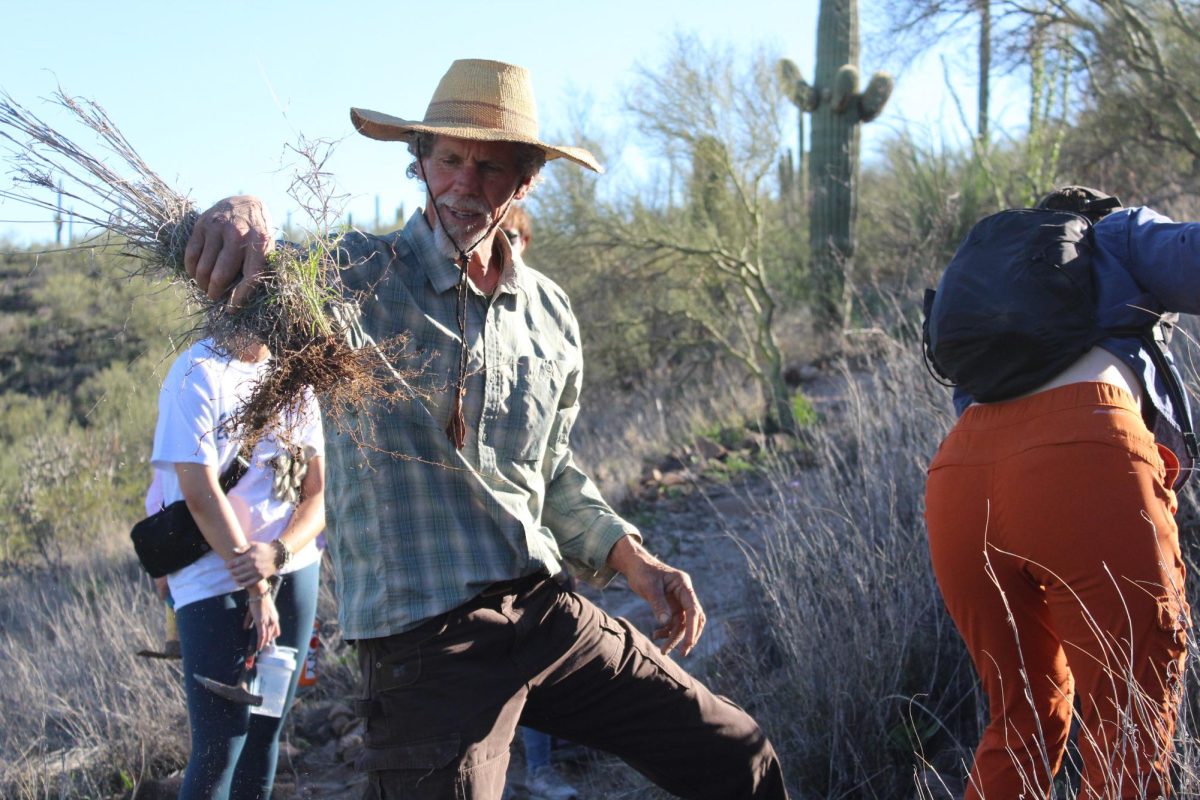While the 2007 fiscal year budget ushers in increased funding for both financial aid and building renewal, it also hints at a future of decreased support from the state.
The Good
The UA is receiving funding for financial aid and building renewal, areas that have been neglected by the state’s budget appropriations in recent years.
After months of lobbying by students and university officials, the Arizona Financial Aid Trust, the state’s only public university financial aid program, will receive $5 million from the adopted state budget for fiscal year 2007.
The appropriation will provide nearly $2 for every student dollar contributed to the trust.
“”We take one percent of the student’s tuition and put it in the Arizona Financial Aid Trust, and the legislature is supposed to match it, but for years they just didn’t,”” said President Emeritus Peter Likins.
The state did not match student contributions dollar for dollar as promised in the AFAT statute established in 1989 because of recession issues and other priorities, Likins said.
In the 2006 fiscal year budget, the state contributed about 47 cents for every student dollar paid by the AFAT student fee tacked on to tuition, far below the dollar-for-dollar match stated in the AFAT statute.
This is the first time in AFAT history in which the state has contributed more than $1 for every student dollar contributed, said Erin Hertzog, president of the Associated Students of the University of Arizona.
“”It’s a big victory for students,”” Hertzog said. “”It shows that students can make a difference and that the legislators will listen to us if we speak up.””
This year’s budget also includes changes to the AFAT statute that will allow students to receive more financial aid money, said Dick Roberts, budget director and assistant vice president for the UA Budget Office.
“”This year the law changed so that 75 percent of the AFAT money contributed will be given out as financial aid with 25 percent going into the endowment,”” Roberts said. “”The net effect of that will nearly double the amount of money given out to the students by AFAT this next year.””
Prior to this year’s budget, all money contributed to AFAT was split, with 50 percent going into an endowment fund for future financial aid needs and the other 50 percent going to financial aid to be awarded to students that given year, Roberts said.
The UA also received a one-time appropriation of $10.9 million in building renewal funds, Likins said.
“”We’re elated,”” Likins said. “”These are the sorts of increases we’ve never seen from the state. For years we took cuts every year.””
The building renewal money goes toward the maintenance of existing buildings, not toward new buildings on campus, Likins said.
“”We’ve been five years without any building renewal funding at all,”” Roberts said. “”It’s put us in crisis mode. Instead of being pre-emptive or preplanned with building maintenance, we had to be in reactionary mode.””
A year ago, because of not receiving building renewal funding, the UA had to ask the Arizona Board of Regents for permission to sell bonds to pay for the building renewal needs, Roberts said.
“”We did in fact sell $10 million in bonds,”” Roberts said. “”In a lot of ways it was the last thing we wanted to do, but we had no other real options.””
The amount of monies given out in building renewal funds is determined by a formula used by the regents that takes into account the number, size and age of buildings on a campus, but the amounts determined by that formula were not the amounts awarded, Roberts said.
“”If we would have received funds in accordance with the formula, we would have received about $38.6 million,”” Roberts said. “”The $10.9 million we received is roughly 29 percent of that figure.””
The formula for general discussion changes each year as buildings age, but the UA probably should have receive around $35 million each year over the last five years, but the UA received nothing, Roberts said.
“”We’re excited to have whatever the state’s willing to put on the table,”” Roberts said. “”But if you let something go till it breaks it’s always more expensive to fix it in the long run.””
One of the many problems resulting from a lack of building renewal funding is aging high-volume air conditioning systems installed in many university buildings, Roberts said.
“”The HVAC systems in each building are different ages, and what we’re finding is that a significant number of their motors and parts aren’t even being manufactured anymore,”” Roberts said. “”We’ve actually had to find people to machine parts for us. We should be replacing these systems whole, but the resources haven’t been there to do so.””
The Bad
In this year’s fiscal budget, the UA was penalized $671,800 because of a state policy that charges the state universities for the number of students they have over 155 credit hours, Roberts said.
“”We’ve got a lot of students with 155 credit hours,”” Roberts said. “”You could easily have more than 155 credit hours. There’s just a huge litany of reasons that could justify that. You could have double majors, or be in graduate school getting a master’s degree, waiting to get into medical school or something.””
The next fiscal year’s budget will penalize universities for every student with more than 145 credit hours, as opposed this year’s 155 credit hour standard, Roberts said.
“”There are some folks in the Arizona Legislature that have basically decided that a student who has 155 credit hours or more is a student who is not progressing at a normal student rate, and if you are here any longer then that, then you should pay more for it,”” Roberts said.
The penalty is included in the budget to penalize the universities from having students who take classes because they don’t want to enter the “”real world”” and get a job, Roberts said.
The Risky
State budget appropriation inconsistencies in recent years have caused the regents to inform the state universities that they will need to be shifting to an “”enterprise model of operation”” if they are to succeed in the future, Roberts said.
An enterprise model would require the universities to find new sources of revenue to fund the overall capabilities of the institution, Roberts said.
“”Where we’re concerned is some people might consider the enterprise model as a substitution for tax-funded support,”” Roberts said.
If the government perceives universities as not needing general fund support, the universities may see cutbacks in appropriations, which could result in increased tuition, Roberts said.
“”The real danger in that is one of the other sources of funds is students,”” Roberts said. “”There’s an absolute correlation between general fund support and tuition price. And while the enterprise model has some very interesting features, it definitely has some risks.””
The state currently perceives the public universities in Arizona as being able to survive increasingly independent of government money, Likins said.
State money awarded through the fiscal year budgets accounts for about 22 percent of the money the university actually spends each year, Likins said.
“”They’re correct in recognizing that we get money from other sources – from tuition, from research contracts, from gifts – so they tend to say to the universities, ‘Take care of yourself,'”” Likins said. “”They can’t say that to the prison system. They can’t charge them tuition. They don’t get any gifts. They’re more reliant on the state and that gives corrections folks a better bargaining position than we have.””








